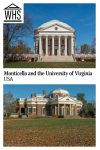Monticello and the University of Virginia in Charlottesville
By Cindy Carlsson
What is Monticello and the University of Virginia in Charlottesville?
This UNESCO World Heritage site includes two separate sites: Monticello and the Academical Village at the University of Charlottesville.
Monticello plantation was the home of Thomas Jefferson, the third president of the United States. The site includes Jefferson’s home and many of its original furnishings, his burial site, a few (mostly reconstructed) supporting buildings and slave quarters, many acres of surrounding land that was part of the original plantation, and a modern visitor center that sits out of sight below the historic site.
Disclosure: This article contains affiliate links. Making a purchase through an affiliate link will mean a small commission for this website. This will not affect your price. Privacy policy.
The historic Academical Village at the University of Virginia in Charlottesville was designed by Jefferson for the university he founded in 1819. The UNESCO site includes the Rotunda (the original library, which was rebuilt after a devastating fire) and two rows of classrooms and housing facing a central lawn.
All architecturally significant buildings at both sites are Neoclassical in style and designed by Jefferson himself.
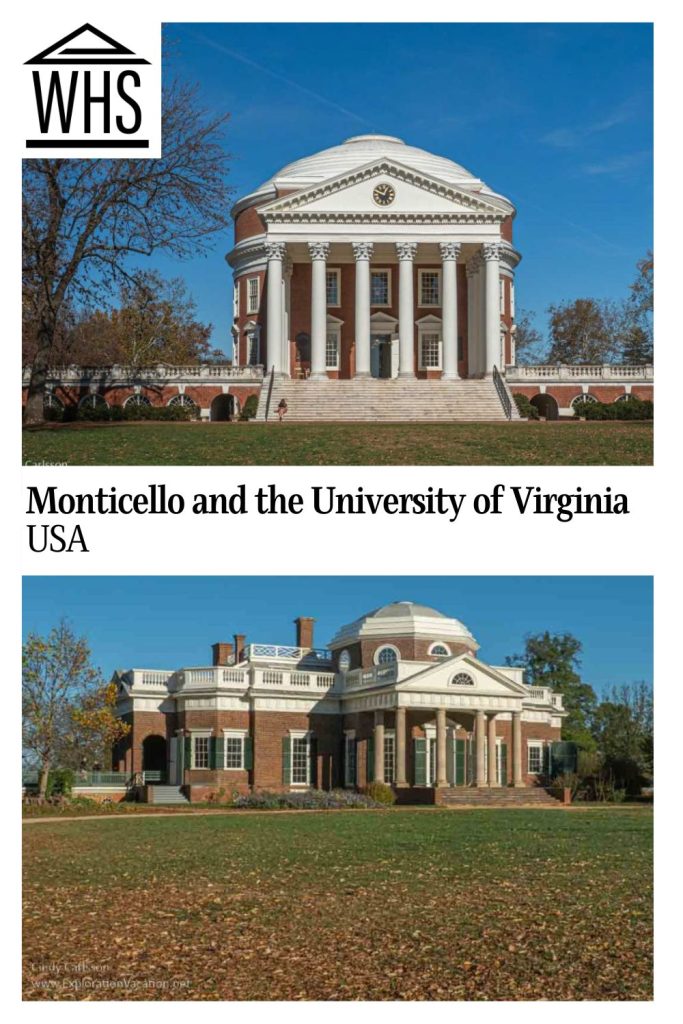
Why is Monticello and the University of Virginia in Charlottesville a UNESCO World Heritage site?
This World Heritage site has some of the earliest and finest examples of Neoclassical architecture in North America. UNESCO values it both for its architectural excellence and as the physical manifestation of Jefferson’s “aspirations for the character of the new American republic.”
UNESCO explains: “Monticello and the key buildings of the University of Virginia are directly and materially associated with the ideas and ideals of Thomas Jefferson. Both the University buildings and Monticello were directly inspired by principles derived from his deep knowledge of classical architecture and philosophy.”
UNESCO’s depiction is an uncritical portrayal of Jefferson as the brilliant architect, intellectual, and founding father he was. However, these sites also highlight the contradictions of Jefferson’s life and values. Contradictions that led to a civil war and still tear at the fabric of the United States today.
While the UNESCO designation conferred in the late 1980s fails to recognize the full extent of Jefferson’s legacy, that broader story is being told to some extent at both sites. When this discussion occurs, it both makes this UNESCO historic site extremely relevant to understanding the United States past and present and enhances appreciation of Jefferson’s skill at translating his beliefs into architecture.
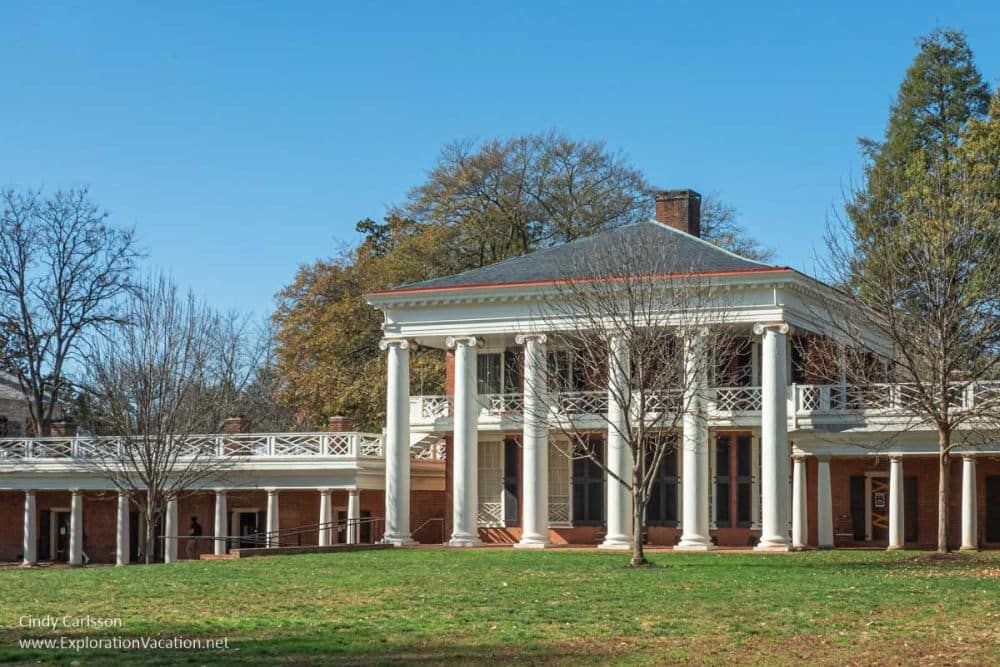
What can you expect on a visit to Monticello and the University of Virginia?
You can walk the grounds and admire the architecture on your own in both parts of this UNESCO site. However, a tour is the best way to get beyond the beauty of Jefferson’s architecture to understand the ideas and beliefs that led to its creation. It’s also the only way to get inside the house at Monticello.
Monticello
The entrance to Monticello is below the hilltop plantation house. This is where you park and pick up your tickets. But the large visitor center also has exhibits and a theater with a movie about Jefferson. If you aren’t very familiar with Jefferson, you can learn a lot right here.
From the visitor center you walk the half mile uphill to the “mountaintop” where the house and restored grounds are located. (Or you can take a shuttle.)
The grounds and outbuildings
Once at the main site, you’ll find exhibits in supporting buildings and open areas below the main house. Supporting buildings include reconstructed slave quarters, storehouses, a textile workshop, and the original stable. Spaces below the main house feature an exhibit on Sally Hemings (Jefferson’s slave and mother of at least six of his children), the kitchen and living quarters used by Monticello’s enslaved cooks, wine and beer cellars, one of the privies, and more. A small pavilion is restored to appear as it might have when Jefferson and his wife lived there as the main house was under construction.
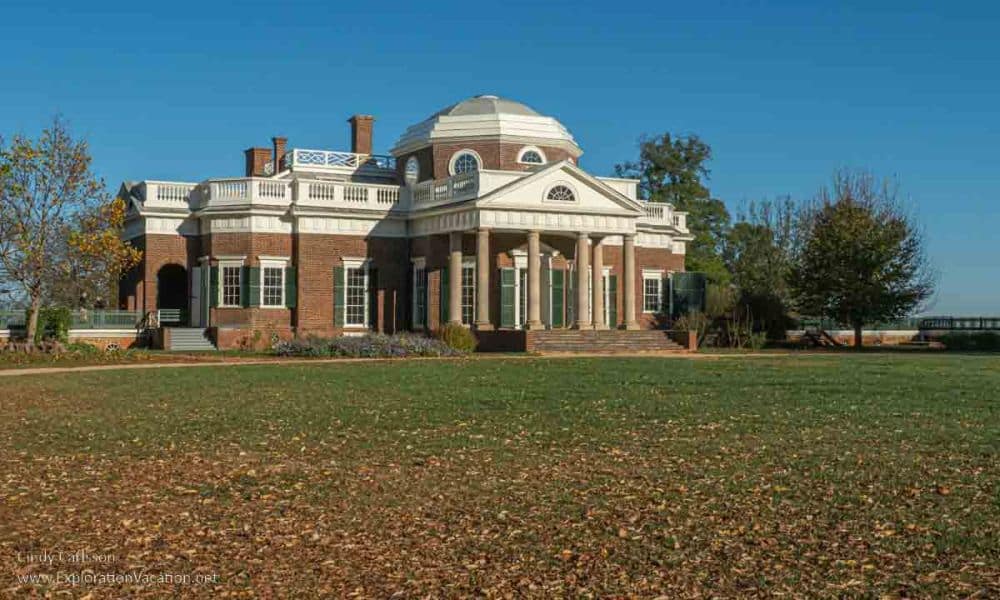
The grounds include both flower and vegetable gardens, as well as orchards. Longer walks lead to both Jefferson’s burial site and the slave graveyard. Any entry ticket allows you to wander the vast grounds and visit all of these areas on your own. Signage and phone apps provide information on what you are looking at.
The general admission ticket includes several guided tours and talks, among these a seasonal garden tour and a tour focused on slavery at Monticello. The excellent and heartbreaking slavery tour covers the Mulberry Row area where most slaves lived and worked. It provides an overview about the life of slaves at Monticello in general, and then focuses on a few individuals.
The plantation house
But, of course, you probably want to get inside Jefferson’s architecturally stunning Palladian-style home.
Jefferson began construction in 1769 and made considerable changes over a long period of time. The home as it exists today dates to 1809. Only the Behind the Scenes Tour currently allows access to all three floors, including the dome. All other tours only include the first floor of the house.
While the dome is intriguing, Jefferson spent most of his time on the first floor. Here you’ll find architecturally beautiful spaces and fully-furnished rooms that look much as they would have when Jefferson lived here. Indeed, you’ll see many items actually owned by Jefferson, as well as clever inventions he designed and installed in the house to make it more efficient. It offers the illusion that Jefferson only stepped away for a moment. And it is here (along with the dome, where he could oversee the entire plantation) where Jefferson spent most of his time at Monticello. His private rooms – his bedroom and library/office – are here. So is the family sitting room Jefferson’s daughter used to manage the household, a cozy tea room, a surprisingly plain dining room, a small greenhouse area, and more.
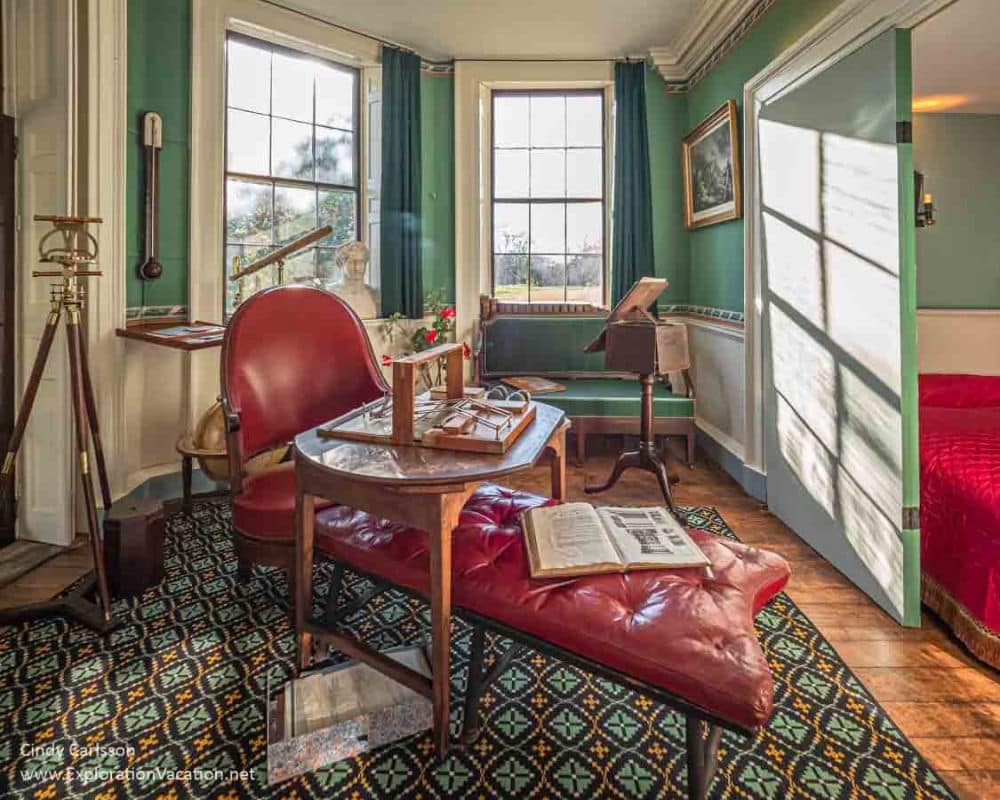
The University of Virginia in Charlottesville
While Jefferson experimented with technology and agriculture at Monticello, he was also inventing a new type of university. And here, more so than at Monticello, the buildings really are physical manifestations of his thinking.
Jefferson’s Academical Village remains the heart of the University of Virginia in Charlottesville and reflects Jefferson’s beliefs about architecture, education, health, and society in general.
The historic Academical Village consists of a library overlooking a lawn lined with two rows of “houses.” Each house provided both classrooms and housing. (Faculty lived above the classrooms and slaves lived below.). Students lived near to their teachers in rows of rooms that link the houses together. Gardens for growing food and various outbuildings were located in back.
The focal point of Jefferson’s Academical Village was and remains the Rotunda. The last of Jefferson’s designs to be completed, this smaller version of the Pantheon in Rome was designed as the University’s library. Almost 200 years of additions, poor maintenance, a disastrous fire, and a major redesign were largely wiped away in recent years to restore it to something very close to Jefferson’s original design. Most recently, a group of PhD students realized Jefferson’s vision of using the interior of the dome as a planetarium.
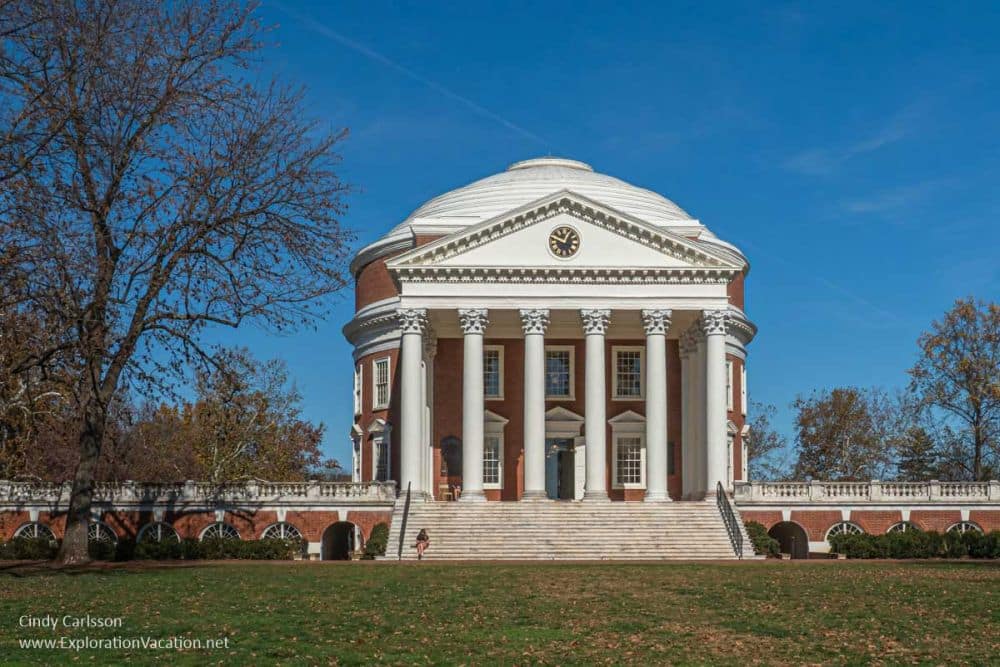
The Rotunda is still used as a library and study area for students. But visitors are welcome to come in and take a look around. A museum in the basement has information on the development of the University in general and the Rotunda in particular.
Neither faculty nor classrooms are still located in the houses along the lawn. However, students still live in the original student rooms and use the houses. Indeed, these rooms along the lawn are coveted spaces reserved for high performing students. That means only one is open to visitors: a student room restored to look as it may have in 1826 when Edgar Allan Poe lived there during his one semester at the university.
Off to the side of the Rotunda and Academical Village, the Memorial to Enslaved Laborers includes space for the names of the 4,000-plus enslaved people who built, worked, and lived at the University. The vast majority of these have unknown names and are represented only by notches in the granite. Others are identified only by their work or relationship to others. While not part of the UNESCO designation, it is a stark reminder of how this place began.
Are Monticello and the University of Virginia worth visiting? And what sorts of travelers would like them?
While these are architecturally beautiful sites, they really are more important for what visitors can learn about Jefferson and his beliefs. Jefferson’s influence on the United States cannot be overstated. His ideas about liberty, freedom, and education – and the conflict between those ideals and the reality of his life – continue to shape the United States today.
Assuming Monticello and the University of Virginia continue to explore the full range of Jefferson’s life, every American should visit them to gain a better understanding of our own history.
Of course, anyone interested in architecture or history would enjoy visiting Monticello and the University of Virginia in Charlottesville.
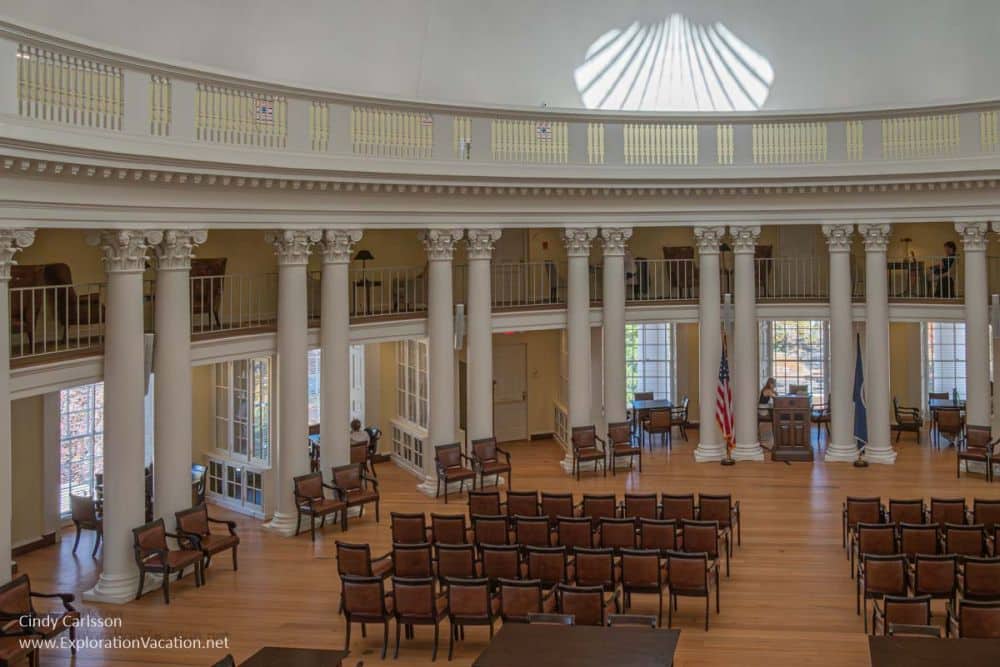
Tips for visiting the Monticello and the University of Virginia
Both are located in a beautiful area of Virginia near the Blue Ridge Mountains and Shenandoah National Park. If you want to combine your trip to Charlottesville with a visit to the Great Smoky Mountains National Park, also a World Heritage site, plan on at least five hours just to drive between the two.
Compare car rental prices here.
If you’d rather take a tour, including transportation, consider this small-group tour or this private tour to Monticello, both of which leave from Washington, DC, or take this private tour that includes both Monticello and the university and starts in Charlottesville.
Visiting Monticello
Monticello is worth most of a day. (The time on your ticket only refers to your tour of the plantation house. You can come whenever you want to see the rest of the site.) A half-day gives you time for a house tour and a little more, as just getting around the site takes some time.
Book your tour of Monticello as far in advance as possible. And, if you can handle steep steps, book the Behind the Scenes tour to see all of the house, including the dome.
You need a timed ticket to go inside the plantation house at Monticello (which you should do), but you can visit the rest of the site as much earlier and stay as much later as you’d like while the site is open.
Large bags and backpacks are not allowed beyond the visitor center. All bags will be inspected.
Download apps for self-guided tours of the grounds and supporting buildings.
Food is available at Monticello in the café at the visitor center below the plantation area. Beverages and snacks are also available in the Farm Shop at the main house.
If you want to walk and hike through more of the site, wear appropriate shoes and bring sunscreen and bug spray. You’ll find plenty of paths and trails through both the restored plantation area and the surrounding natural area.
You cannot see this site at all without a ticket. It’s not visible from a public highway or trail. If you want to see the iconic plantation house, you have to pay to enter the site.
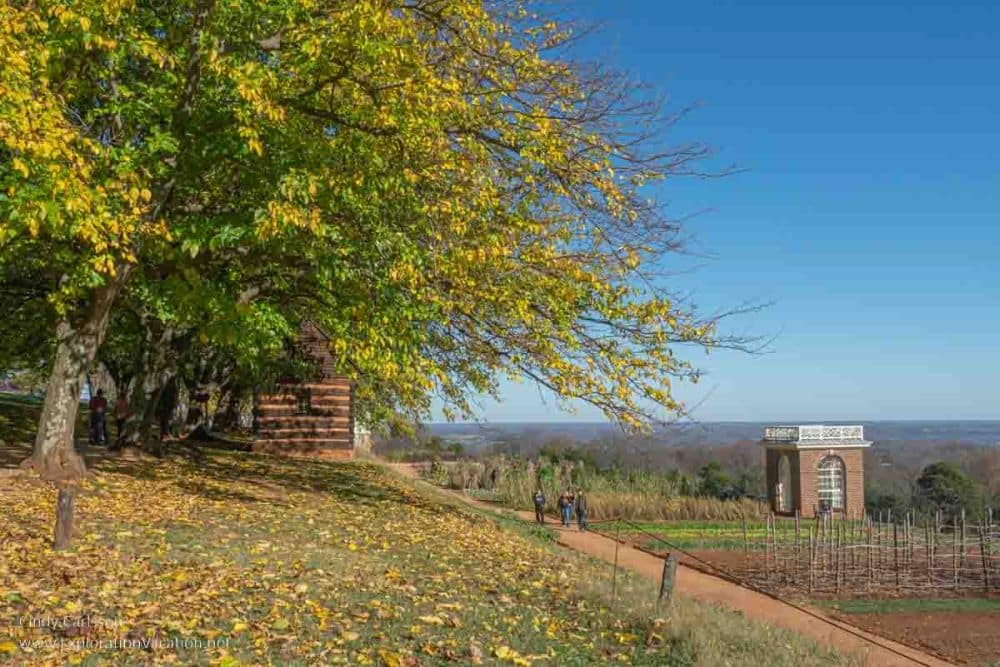
Visiting the University of Virginia
Visitors short on time might be tempted to skip the University of Virginia and just visit Monticello. Don’t! Of the two, I found the university campus more interesting both architecturally and historically. However, you need a good tour that really dives into the University’s history to truly understand and appreciate the site and its importance.
You can walk through the historic Jefferson campus and Rotunda at the University of Virginia in an hour. However, aside from a small museum in the Rotunda, there’s little historic information available without taking a tour. Give yourself a couple of hours to do the tour (offered seasonally) and then spend some time wandering on your own.
Find accommodations in Charlottesville or Washington, DC.
Tours are only offered during the academic year, so visit during that time period if you can. Student guides are thoroughly trained and very knowledgeable about the site’s architecture, history, and Jefferson himself. Although this was a relatively new thing when I visited a couple of years ago, the tour I took was honest about Jefferson’s beliefs about race, the role of slave labor at the University, the lives of the people enslaved here, the University’s role in the civil war, and the ongoing racial challenges that are part of Jefferson’s legacy. At the same time, students were proud of their school and excited about its future.
Because the University of Virginia is located right in Charlottesville, you can park anywhere and walk or bike to the historic Jefferson campus. But public parking anywhere near the University is quite limited, so give yourself plenty of time to find a spot.
You can visit the Rotunda and wander around campus on your own at any time, but this area is an active part of the campus. Respect student privacy as you look around.
Where can you find Monticello and the University of Virginia Charlottesville?
The University of Virginia
The University of Virginia is in a historic neighborhood in Charlottesville. Monticello is perched on a “little mountain” about five miles (8 km) from the university.
Charlottesville is about a 3-hour drive southwest of Washington, DC, although drive times can vary considerably. It’s about an hour northwest of Richmond, Virginia. The Charlottesville-Albemarle Airport (CHO) has daily flights via American, Delta, and United. Amtrak and several bus lines also serve Charlottesville.
Free parking is available in Charlottesville, but hard to find. Paid parking is available throughout the city, but that too can be hard to find near the University.
Monticello
Monticello is at 1050 Monticello Loop in a rural area about a 10-minute drive from the university. If you don’t have a car, you can take a city bus (about ½ hour) or taxi.
Parking is included in your ticket to visit Monticello. Electric car charging is also available. A shuttle takes visitors up to the plantation house and grounds, although visitors may walk up via hiking trails.
For more information about Monticello and the University of Virginia in Charlottesville, including opening hours and admission fees, see the official Monticello and University of Virginia websites.
Have you been to Monticello and/or the University of Virginia Charlottesville? If so, do you have any additional information or advice about this UNESCO World Heritage site? Please add your comments below!

